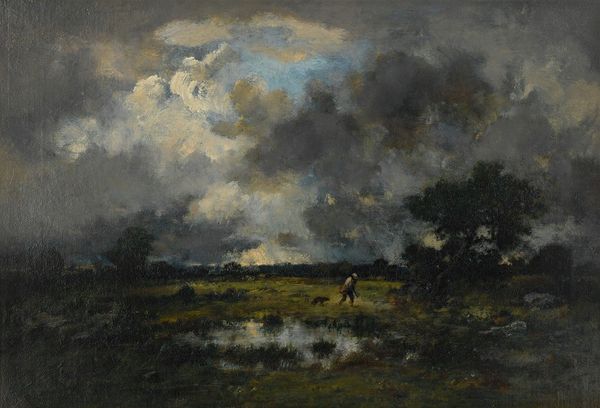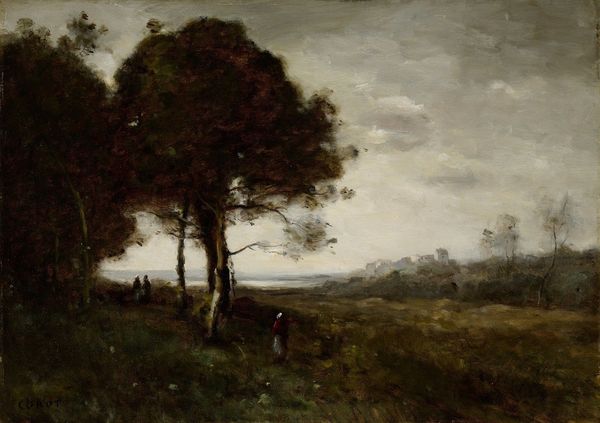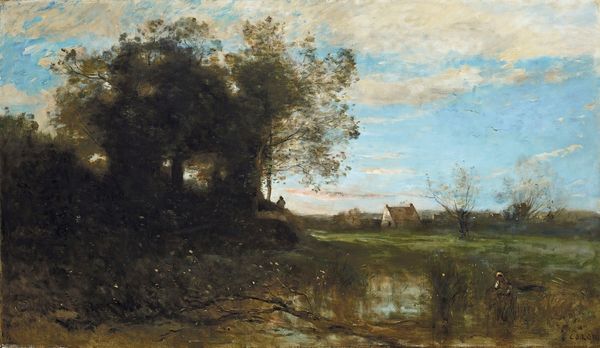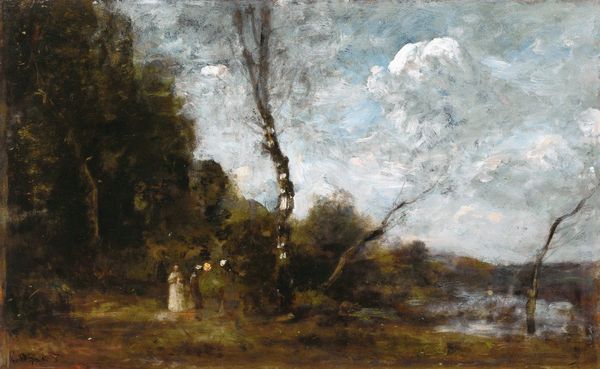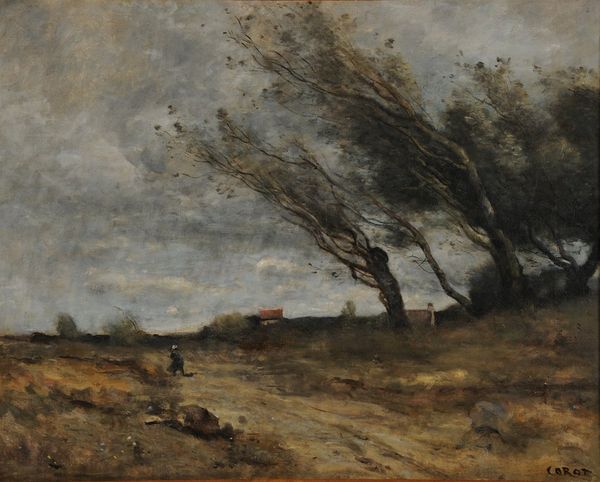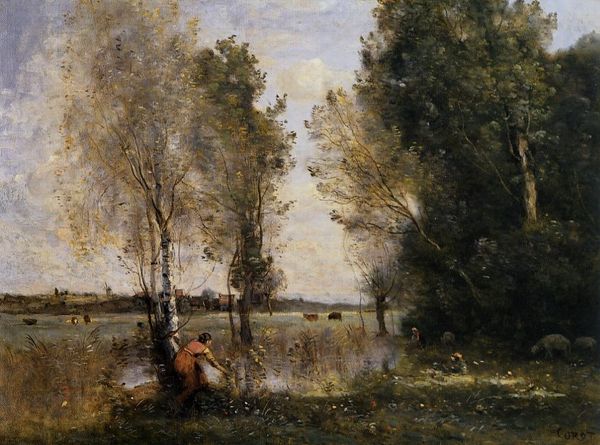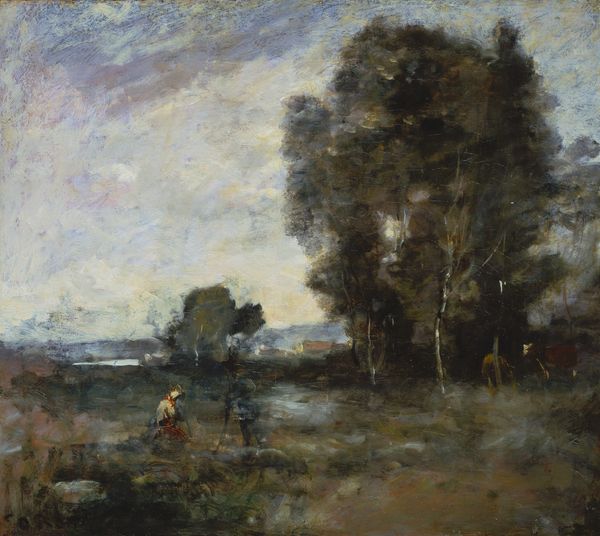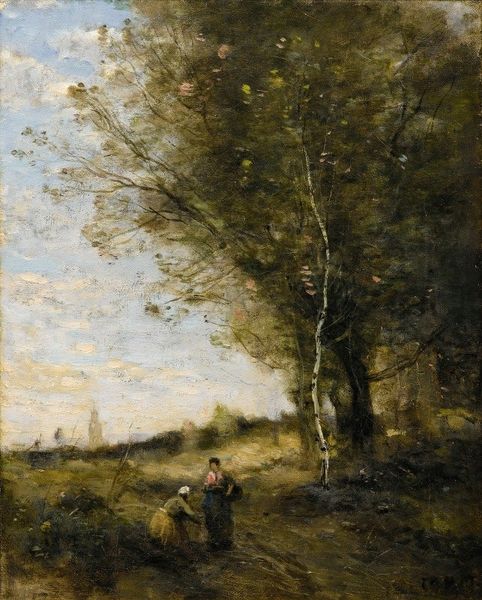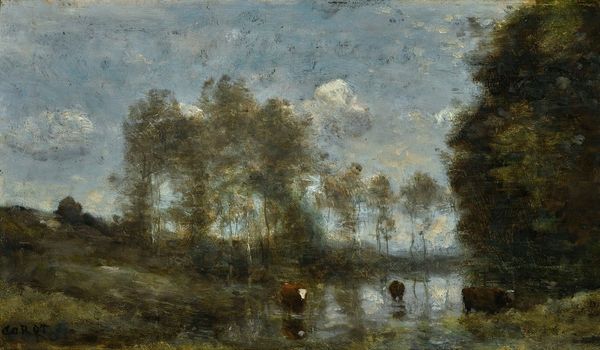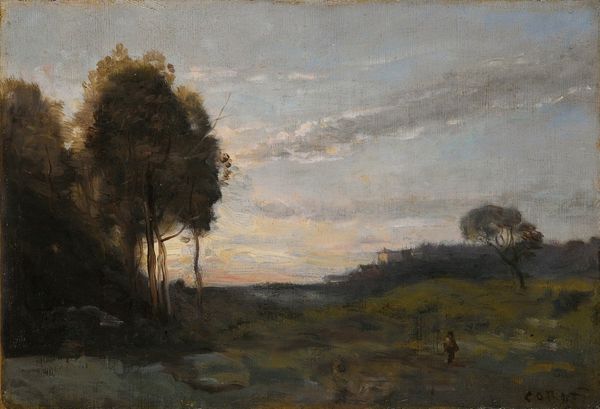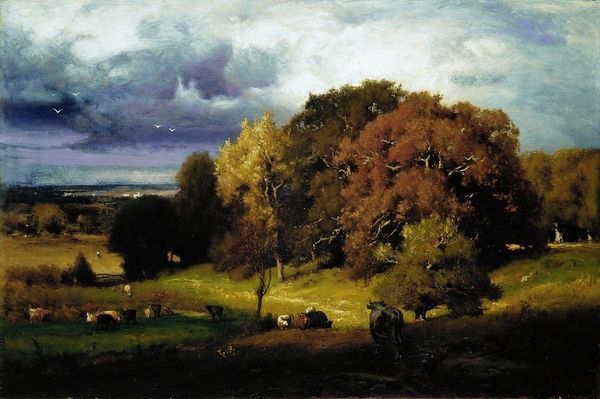
painting, plein-air, oil-paint
#
painting
#
impressionism
#
plein-air
#
oil-paint
#
landscape
#
impressionist landscape
#
oil painting
#
romanticism
#
genre-painting
Copyright: Public Domain: Artvee
Editor: This is Corot's "Landscape at Sunset," and the oil paint has been applied with such freedom. It feels less like a representation and more like an experience of being there. What do you see in this piece beyond just a pretty landscape? Curator: Beyond the obvious beauty, I see a subtle commentary on land use and labor. The lone figure seems almost swallowed by the landscape, bringing attention to the human relationship with nature in the face of burgeoning industrialization. What labor is being performed, by whom, and at what cost? This invites considerations of gender, class, and perhaps even colonial implications, particularly in light of Corot's other works and the social upheavals of 19th-century France. Do you think Corot was consciously engaging with those issues? Editor: That's interesting. I hadn’t considered it in that way, but I suppose I was just focusing on the "pretty" aspect, like the painterliness and light. I assumed plein-air painting was mainly about capturing fleeting moments. Curator: Capturing fleeting moments, yes, but through that act, also engaging with a very real and rapidly changing world. It is in these 'moments' that power dynamics and social realities are reflected. For instance, why is it a solitary figure and what does their work look like, within a landscape? Editor: I see your point. Considering the broader social context gives the image a new, deeper dimension. The loneliness now feels heavier, more symbolic of something larger. Curator: Exactly! By connecting art to history and lived experiences, we move beyond aesthetics and begin to unravel powerful narratives. It becomes less about what it *is* and more about what it *means* in the tapestry of human experience. Editor: I'll definitely carry this perspective as I view other landscape paintings. Thank you.
Comments
No comments
Be the first to comment and join the conversation on the ultimate creative platform.


